Yeti SB140
Wheel Size: 29’’
Travel: 140 mm rear / 150 or 160 mm front
Geometry highlights:
- Sizes offered: S, M, L, XL, XXL
- Headtube angle: 65.4°
- Seat tube angle: 77.5°
- Reach: 485 mm (size Large)
- Chainstay length: 436 mm to 444 mm (2 mm increments per size)
Frame material: Carbon Fiber
Price:
- Frame w/ Fox Float X Factory shock: $4,500
- Complete bikes: $6,400 to $11,700
Blister’s Measured Weight (LR T3 build, size Large): 30.8 lb / 14.0 kg
Test Locations: Gunnison & Crested Butte, CO
Reviewer: Eric Freson (5’10’’, 170 lbs / 177.8 cm, 77 kg)
Test Duration: 3 months

Intro
Fresh on the heels of the releasing the new SB160 and SB120, Yeti dropped a new mid-travel 29er to round out their range — the SB140. Yeti’s not exactly shy about hyping up the versatility of the SB140, describing it as “the bike in between nothing” and that it will “leave no rider wanting”. Of course, there’s no such thing as a single best bike at everything, and Yeti does acknowledge that “no rig can rule all,” but they’re clearly positioning the SB140 as a bike that’s supposed to do a lot of different things well.
Somewhat confusingly, the new SB140 is a replacement for the SB130, not the prior-generation, 27.5’’ wheeled SB140, which has now been replaced by the new SB135 (full review coming very soon). Naming quibbles aside, though, there’s some interesting stuff going on here, so let’s get right to it.
The Frame
The details of the SB140 aren’t going to come as a surprise to anyone who’s paid attention to the new SB160 and SB120. The overall frame layout remains, with their Switch Infinity slider taking the place of a lower link and a horizontally-mounted shock driven by a rocker link and short yoke. Probably unsurprisingly, the total amount of progression of the SB140 lands between that of the SB120 and SB160 (going from about 2.75:1 to 2.35:1, for 14% total progression) though the curve falls off a little more sharply deep in the travel as compared to the other two bikes, which are quite linear. That said, the SB140’s curve isn’t doing anything crazy and is still fairly straight overall, and of course, it’s got 140 mm of rear travel, as the name would suggest.
As with the SB160 and SB120, the SB140 now gets a threaded bottom bracket shell (in place of the PF92 one on the SB130) and SRAM UDH derailleur hanger. A full set of ISCG-05 tabs are included, and the SB140’s downtube hump isn’t gone entirely, but it’s been smoothed out to improve clearance and there’s still a rubber guard on it in case you still manage to smash it on something. The increased downtube clearance hasn’t taken away space for a water bottle inside the front triangle across the size range, and the chainstay and seat stay guards have been beefed up to help keep things quiet. Yeti’s new cable routing system carries over too. The cables all still go through the frame (but thankfully not the headset) and bolt-on covers clamp the cables at the exit points to better keep them in place with the goal of preventing rattling and rubbing.
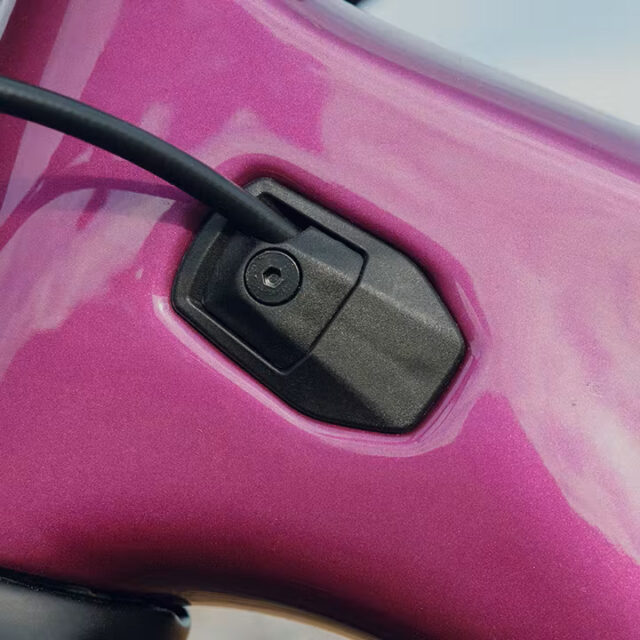
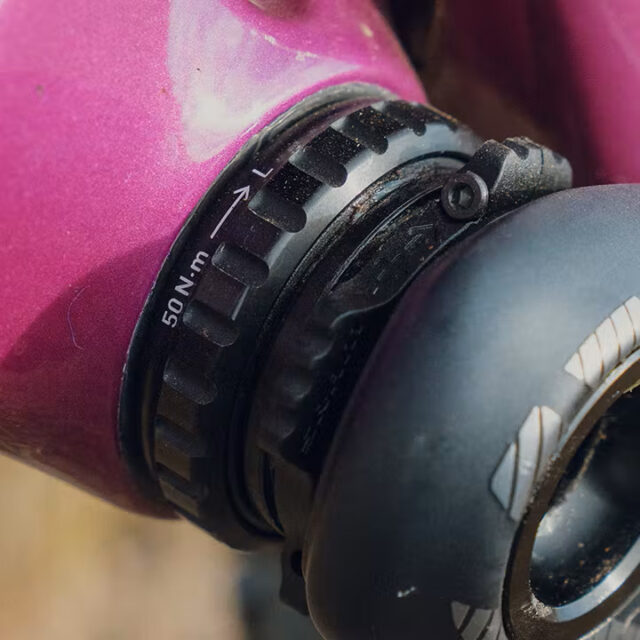
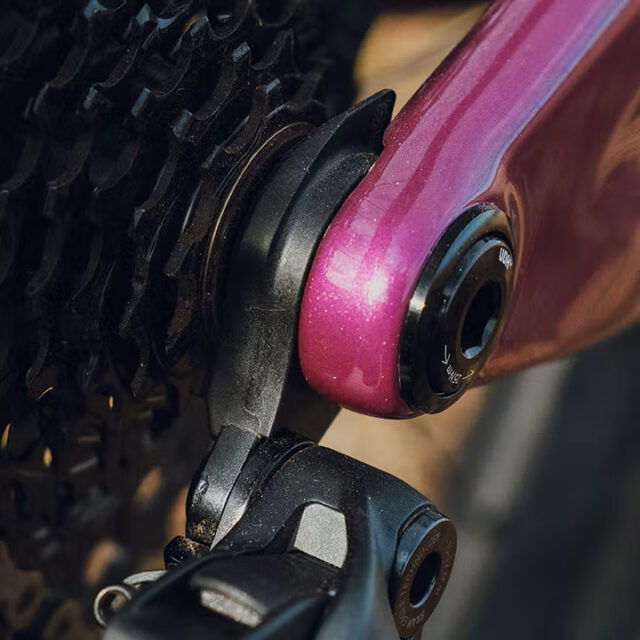
Fit & Geometry
In most respects, the SB140’s geometry is actually quite similar to that of the SB130 that it replaces — the headtube is only 0.1° slacker (at 65.4°), the effective seat tube angle is a modest 0.5° (ish, varies slightly biy size) steeper, and the reach is about 5 mm longer in a given size (485 mm for the size Large) — subtle changes all around. The XXL size is new, but apart from that, the one big departure is the chainstay length. As with Yeti’s other new models, the SB140 varies its chainstay length by frame size, and they’re now much longer. The Small SB140 starts at 436 mm, and each successive size gains 2 mm, topping out at 444 mm on the XXL; the SB130 got 433 mm stays across the board, shorter than even the smallest SB140. The SB130 definitely had a clear preference for a forward stance and aggressive weighting of the front wheel, and given their otherwise similar numbers, but substantially different chainstay lengths (in the larger sizes especially), we’d expect the SB140 to feel a lot more neutral in that regard.
The numbers listed above are all for the standard SB140 builds, which come with a 150mm-travel fork; the taller 160mm-travel one from the LR builds (more on those in a moment) slackens the headtube and seat tube by 0.5°, knocks 5 mm off the reach in a given size, and raises the bottom bracket by 3 mm.
The Builds
The list of builds that Yeti offers on the SB140 is far more expansive than that featured on the SB120 or SB160, though the list is padded out substantially by the inclusion of a “Lunch Ride” (LR) option on most of the tiers — essentially a beefed-up spec that features a longer 160mm-travel fork (up from 150 mm on the standard builds), a Fox Float X rear shock in place of a DPS, and burlier brakes in most cases. The LR builds also sub in a Grip2 damper in the fork (in place of a Fit4 one) on builds that come equipped with Factory-level Fox suspension, and feature a beefier rear tire (a 2.4’’ Maxxis Minion DHR II in place of a 2.3’’ Maxxis Aggressor); either way, you get a 2.5’’ Minion DHF up front and Exo casings all around; rubber compounds aren’t specified.
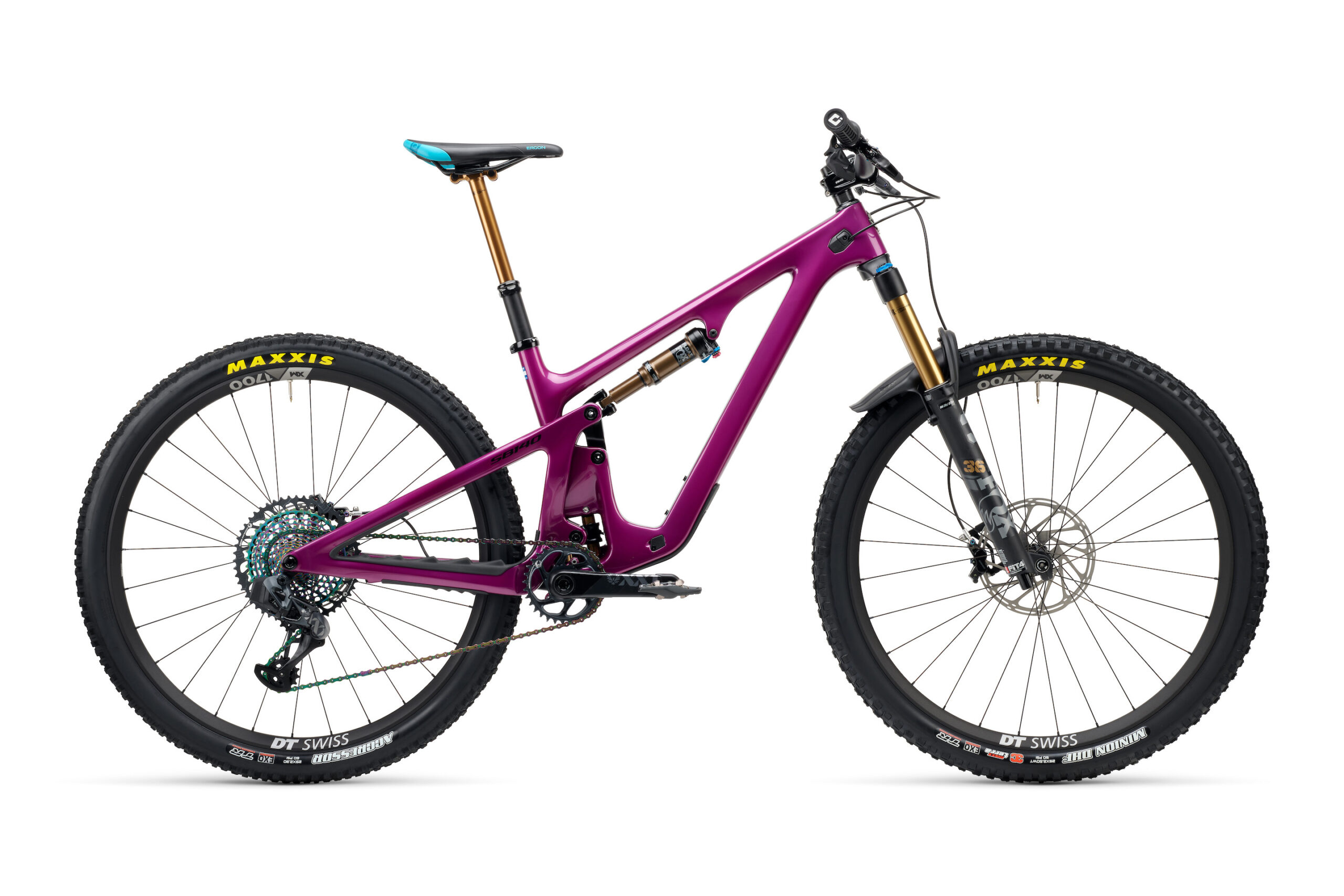
- Drivetrain: Shimano SLX w/ XT shifter
- Brakes: Shimano SLX 4-piston w/ 203 mm front / 180 mm rear rotors
- Fork: Fox 36 Performance (150 mm travel)
- Shock: Fox Float DPS Performance
- Wheels: Crank Brothers Synthesis Enduro
- Dropper Post: OneUp (S: 150 mm; M: 180 mm; L–XXL: 210 mm)
- Drivetrain: Shimano SLX w/ XT shifter
- Brakes: Shimano SLX 4-piston w/ 203 mm front / 180 mm rear rotors
- Fork: Fox 36 Performance (160 mm travel)
- Shock: Fox Float X Performance
- Wheels: Crank Brothers Synthesis Enduro
- Dropper Post: OneUp (S: 150 mm; M: 180 mm; L–XXL: 210 mm)
- Drivetrain: SRAM GX
- Brakes: SRAM G2 R w/ 200 mm front / 180 mm rear rotors
- Fork: Fox 36 Performance (150 mm travel)
- Shock: Fox Float DPS Performance
- Wheels: Crank Brothers Synthesis Enduro
- Dropper Post: OneUp (S: 150 mm; M: 180 mm; L–XXL: 210 mm)
- Drivetrain: SRAM GX
- Brakes: SRAM Code R w/ 200 mm front / 180 mm rear rotors
- Fork: Fox 36 Performance (160 mm travel)
- Shock: Fox Float X Performance
- Wheels: Crank Brothers Synthesis Enduro
- Dropper Post: OneUp (S: 150 mm; M: 180 mm; L–XXL: 210 mm)
- Drivetrain: SRAM GX AXS
- Brakes: SRAM Code R w/ 200 mm front / 180 mm rear rotors
- Fork: Fox 36 Performance (160 mm travel)
- Shock: Fox Float X Performance
- Wheels: Crank Brothers Synthesis Enduro
- Dropper Post: OneUp (S: 150 mm; M: 180 mm; L–XXL: 210 mm)
- Drivetrain: SRAM X01
- Brakes: SRAM G2 RSC w/ 200 mm front / 180 mm rear rotors
- Fork: Fox 36 Factory Fit4 (150 mm travel)
- Shock: Fox Float DPS Factory
- Wheels: DT Swiss XM1700
- Dropper Post: Fox Transfer (S: 150 mm; M: 175 mm; L–XXL: 200 mm)
- Drivetrain: SRAM GX w/ X01 rear derailleur
- Brakes: SRAM Code RSC w/ 200 mm front / 180 mm rear rotors
- Fork: Fox 36 Factory Grip2 (160 mm travel)
- Shock: Fox Float X Factory
- Wheels: DT Swiss XM1700
- Dropper Post: Fox Transfer (S: 150 mm; M: 175 mm; L–XXL: 200 mm)
- Drivetrain: SRAM X01 Eagle AXS w/ XX1 AXS rear derailleur
- Brakes: SRAM G2 RSC w/ 200 mm front / 180 mm rear rotors
- Fork: Fox 36 Factory Fit4 (150 mm travel)
- Shock: Fox Float DPS Factory
- Wheels: DT Swiss XM1700
- Dropper Post: Fox Transfer (S: 150 mm; M: 175 mm; L–XXL: 200 mm)
- Drivetrain: SRAM X01 Eagle AXS w/ XX1 AXS rear derailleur
- Brakes: SRAM Code RSC w/ 200 mm front / 180 mm rear rotors
- Fork: Fox 36 Factory Grip2 (160 mm travel)
- Shock: Fox Float X Factory
- Wheels: DT Swiss XM1700
- Dropper Post: Fox Transfer (S: 150 mm; M: 175 mm; L–XXL: 200 mm)
- Drivetrain: SRAM XX1 Eagle AXS
- Brakes: SRAM G2 Ultimate w/ 200 mm front / 180 mm rear rotors
- Fork: Fox 36 Factory Fit4 (150 mm travel)
- Shock: Fox Float DPS Factory
- Wheels: DT Swiss XM1700
- Dropper Post: Fox Transfer Factory (S: 150 mm; M: 175 mm; L–XXL: 200 mm)
- Drivetrain: SRAM XX1 Eagle AXS
- Brakes: SRAM Code RSC w/ 200 mm front / 180 mm rear rotors
- Fork: Fox 36 Factory Grip2 (160 mm travel)
- Shock: Fox Float X Factory
- Wheels: DT Swiss XM1700
- Dropper Post: Fox Transfer Factory (S: 150 mm; M: 175 mm; L–XXL: 200 mm)
All the “C” builds come with the more basic “Carbon” series frame, and can be upgraded to Fox Factory suspension for a $600 upcharge; the “T” builds get the lighter “Turq” frame and can be upgraded to DT Swiss EXC 1501 Carbon wheels for $1,000.
Yeti hasn’t exactly been known for their budget builds in general, but there are a few head-scratchers here — most notably the $900 upcharge to go from an LR C2 build to the LR C3 one, which just gets you an upgrade to a SRAM GX AXS drivetrain on an otherwise identical build; a GX AXS upgrade kit retails for $633. The $4,500 frame-only price is also awfully steep.
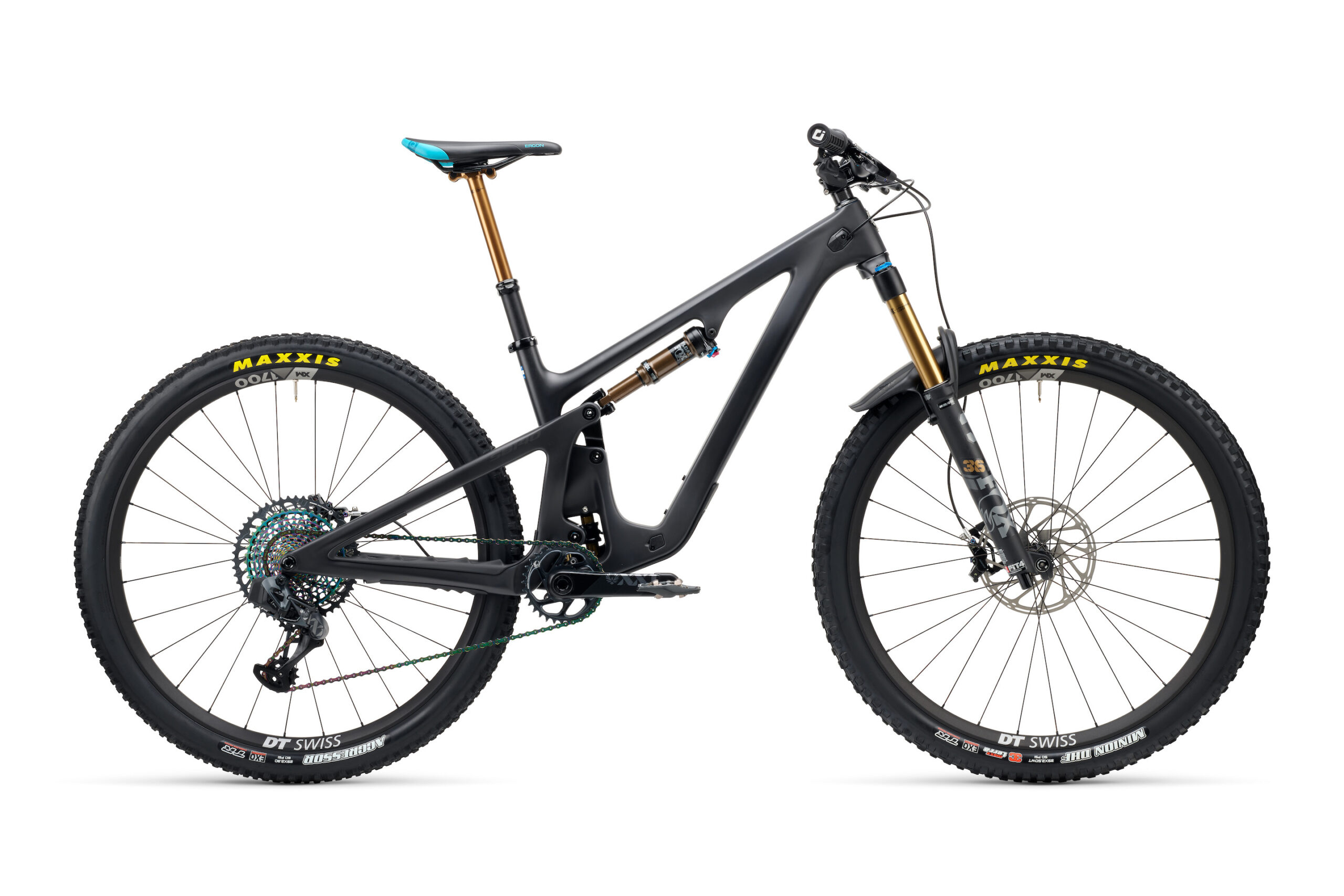
Some Questions / Things We’re Curious About
(1) On paper, the most notable change from the SB130 to the SB140 are the much longer chainstays (especially on the larger sizes). How much of a difference does that make on trail, and how significant do the other tweaks feel?
(2) And in a crowded market of versatile ~140mm-travel Trail bikes, how does the SB140 stack up?
FULL REVIEW
Eric Freson (5’10’’, 170 lbs / 177.8cm, 77 kg): It’s solidly winter-y as I sit down to go over my notes and write up my final impressions about my time aboard the Yeti SB140. Reflecting on my rides with the SB140 this fall, I’m struck by a sense of nostalgia for how it was the right bike at the right time in the right place. Peak Colorado fall foliage aboard a Yeti Trail bike is about as “Colorado” as it gets, and thinking about that purple machine gets me looking forward to the 2024 riding season. But for now, we’re here to talk about the SB140 — a slightly longer-travel evolution of the super-popular (and notably aggressive for the time) SB130.
So how does the SB140 compare? Let’s take a look.
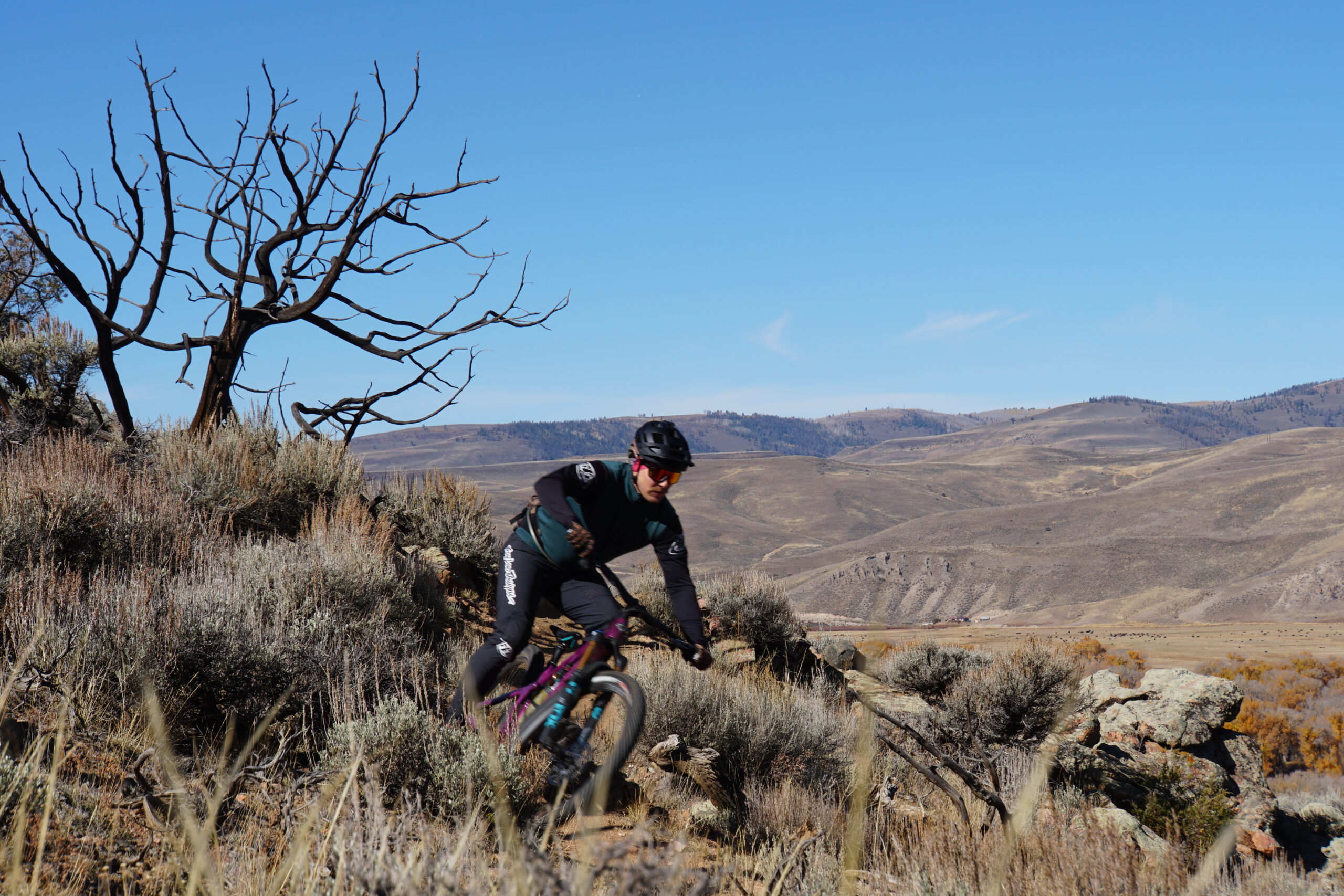
Fit & Sizing
The geometry numbers of the SB140 (mostly) aren’t a huge departure from the previous-generation SB130 or a lot of modern Trail bikes in general. That’s no cause for alarm. The fit and sizing of the SB140 feel modern but have moved away from feeling as emphatically aggressive as the SB130 seemed when it first came out. I could simply start riding the SB140, and I didn’t need to recalibrate my tolerances for wheelbase, head or seat angle, or other expectations for fit in order to quickly get comfortable.
The SB140’s standover is impressively low, the frame looks svelte and fast, and I eventually settled on running ~28% sag. The longer chainstays of the SB140 (as compared to the SB130) are a welcome tweak to the bike’s overall feel and balance, and I appreciated the increased downtube clearance when riding slower and more technical trails — dry-docking a $4,500 carbon frame on a rock takes my head out of the game.
At 5’10” (178 cm), the size Large SB140 was on the longer side of the spectrum for my personal preferences in terms of both reach and effective top tube stats, especially when coupled with the SB140’s low-ish stack height. I mention this because I do think it impacted the ride and feel, as I’ll talk about this more below. If I were buying an SB140 myself, I’d go with a size Medium. While I think I’d still have to play with bar and stem height to adjust the stack height, the shorter reach of the Medium would have brought my center of mass back farther, which I think would have made for a more balanced feel. More on that below.
Climbing
The SB140’s suspension performance under power feels fairly active and grippy but supportive once you get a little farther into the travel. I can induce suspension movement while pedaling, but I wouldn’t describe it as wallowy or inefficient — just nicely balanced. I rarely found myself reaching for the climb switch on the Fox Float X rear shock. The SB140’s 77.5° effective seat tube angle and generally low front end had me feeling poised and efficient when seated, trying to keep weight over the front wheel, and driving power through the pedals. I didn’t often feel myself adjusting my weight over the rear tire in order to hunt for grip, and I felt that the climbing position of the SB140 helped me keep a very calm upper body while letting the rear end of the bike track the terrain on its own accord.
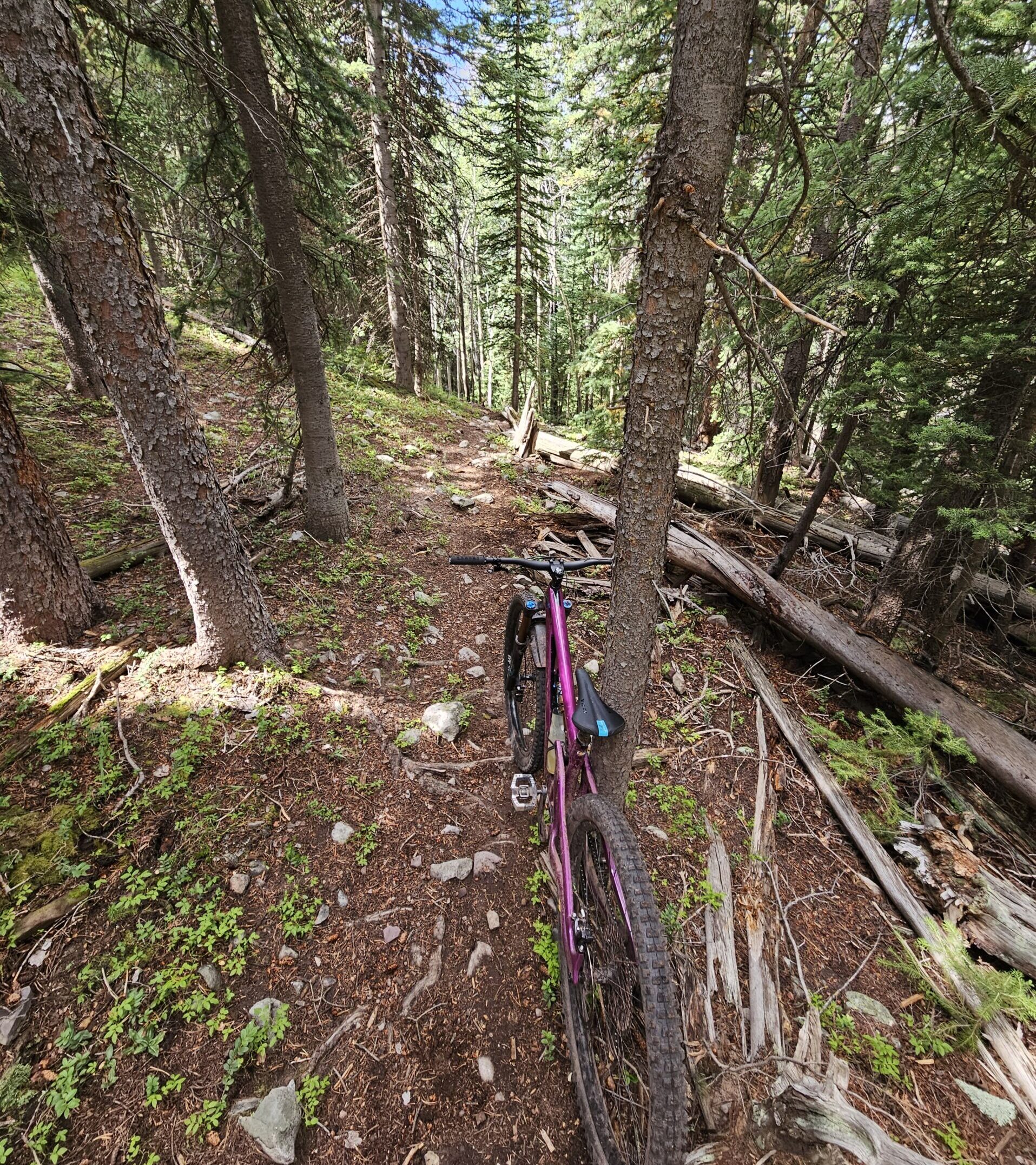
The climbing traction of the SB140 is fantastic. Couple that with my low and (relatively) stretched-out climbing position (particularly for me on the Large frame), aggressive rubber, and a 30-tooth chainring, and I felt nearly invincible when hitting steep climbs (walls) of loose-over-hard dirt on skinny singletrack at 11,000 ft. If you have the legs, the SB140 won’t make you regret tackling a climb instead of walking.
In the Lunch Ride build that we tested, the SB140 didn’t feel especially “sporty” when pointed uphill as far as generalist Trail bikes go, but more “calm.” If it were my bike, I would probably opt to put a faster-rolling tire on the rear of the bike in place of the Maxxis Minion DHRII that is spec’d on the Lunch Ride builds; I’d go with something that offers less rolling resistance and more encouragement to stand up and attack uphill, given how much climbing traction the SB140 affords you.
Overall, the SB140 struck me as a bike that rewards efficient energy allotment for steady gains on climbs, rather than explosive attacks and puking up a lung to get to the top as quickly as humanly possible. This aligns well with Yeti’s “go deep and find out what’s on the other side” mantra for this bike.
Descending
When descending, what stood out the most about the SB140 were (1) its great small-bump compliance and traction, (2) overall quiet ride (both regarding noise and frame feedback), and (3) a bias to place my weight over the front wheel. This is not a bike that rewarded an off-the-back, loose approach to going fast, which is something our other reviewers also noticed with its predecessor, the old SB130, and the SB140’s bigger sibling, the SB160. The SB140’s combination of weight distribution and its modestly progressive leverage curve made it feel more balanced and less prone to hanging up when being ridden from a somewhat forward posture.
I have felt fastest and most confident aboard the SB140 when I kept my weight over the front wheel, utilized a strong upper body to maintain that riding position, and stayed light and agile with a focus on my line choices, utilizing the bike’s traction to find smooth lines more than straight lines.
It’s an approach that works well here in the Gunnison / Crested Butte Valley and is conducive to attacking fast sections of trail that generally have little in the way of soil traction and nothing in the way of berms. On our steepest, fastest, rowdiest trails, I could push the SB140 too far and find the limit of how hard the bike was capable of being pushed. That’s not to say the SB140 became totally unmanageable, but simply less composed. Its not-super-slack head tube angle, long-ish reach, and lower stack height, coupled with my height relative to the size Large frame, meant that in those specific instances, the geometry preservation of the fork and the chassis weren’t enough to keep me from feeling like I was too far over the front of the bike. This, in concert with the SB140’s forward-biased posture, unsettled its overall balance and resulted in the bike feeling overwhelmed. I think sizing down to the Medium frame would have actually made it easier for me to ride the bike more actively and dynamically in those scenarios, rather than trying to turn it into more of a plow-y, stable bike than it’s really meant to be. (FWIW, I’m on the brink of Yeti’s recommended sizing bands between the Medium and Large frames.)
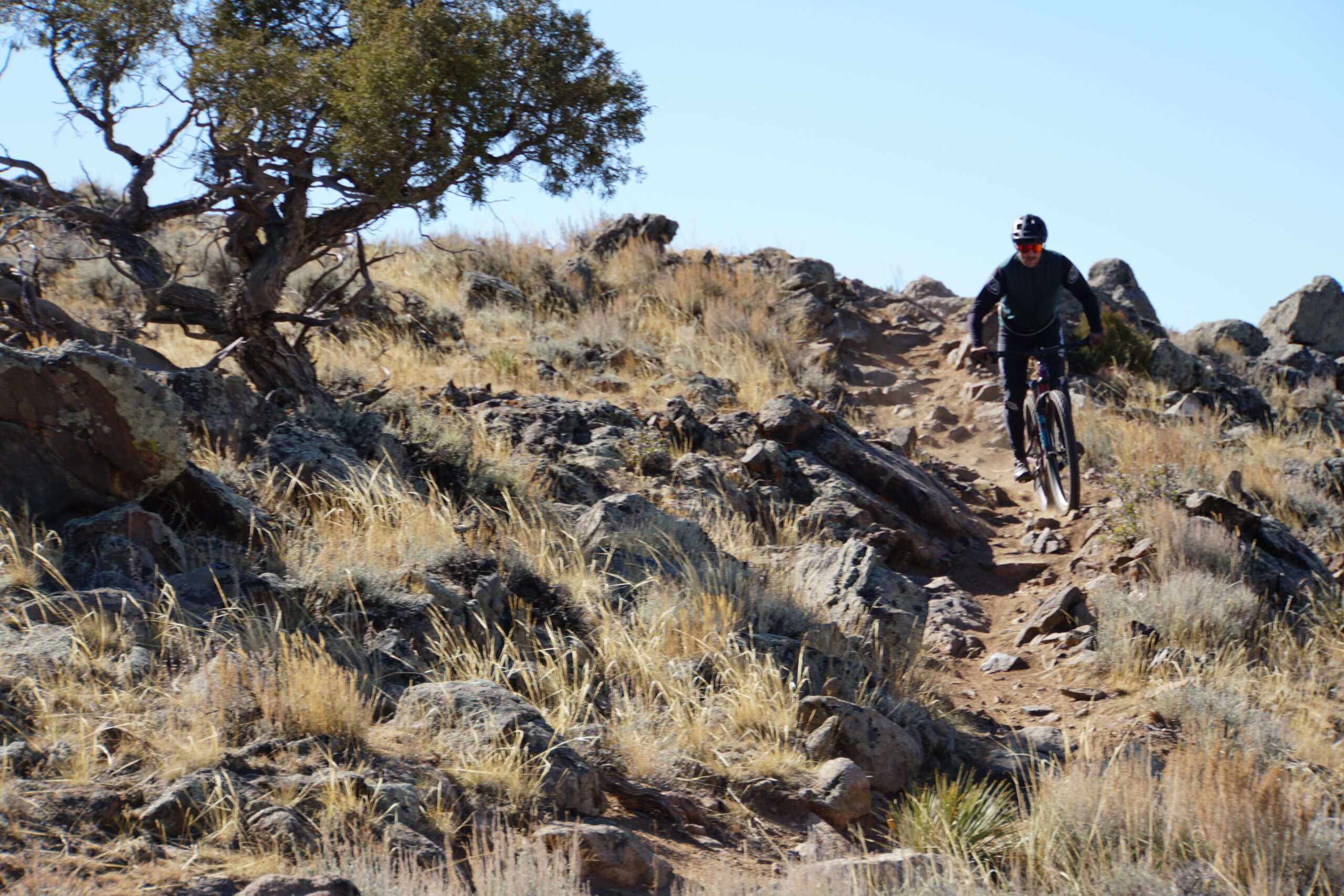
The SB140’s preference for staying forward on the bike has meant that I have changed my fork and front tire pressure setup a bit (more compression damping and air pressure than I’d typically use). I also raised the bar height a bit, compared to what I might normally run. The tune on the shock has felt good, with the SB140 maintaining great traction both on and off the brakes and offering a smooth linear feel, access to all the travel, and no harsh bottoms outs. If it were mine, I would swap the stock 0.2 in^3 spacer out for a 0.4 in^3 volume spacer in the Float X to increase the progressivity of the rear end, but this hasn’t been a bike I have found myself riding rear-wheel-heavy.
As I alluded to above, the SB140 has also been wonderfully quiet in its feel and response to trail noise transmitted through the bike. It’s generally been a great tool for attacking the varied singletrack around Crested Butte.
The Build
The SB140 frame and LR T3 build should feel refined, given the prices they command, and they do. The frame itself has all the touches of a bike crafted by folks who geek out on a refined platform. The cable routing and frame protection are particular standouts for me, combining for a very quiet ride. The purple color looks fantastic and has lusty depth and sheen. I can keep a full-sized water bottle in the front triangle, but there’s no in-frame storage if you are used to keeping your tools and accessories in your bike instead of on your person. The components themselves have so far left me wanting for naught.
This was my first time aboard the new SRAM Transmission, and I can see why SRAM made the updates. The shifting is smooth and accurate, with considerably better clutch tension than the original AXS derailleurs. I never whacked the derailleur hard enough to need to reset it, but it’s a cool feature. The Fox 36 (with Grip2 damper on the LR), Fox Float X, Maxxis rubber, and DT XM 1700 wheels are all old friends with whom I get along very well. The EXO casings were robust enough for me on our trails, and I ran a Cush Core insert in the rear tire for a bit of extra sidewall support. Other than initially changing my fork’s settings to complement the balance of the bike and its bias towards a longer front center, I spent exactly zero time trying to change the feel or character of any of the components beyond their factory settings.
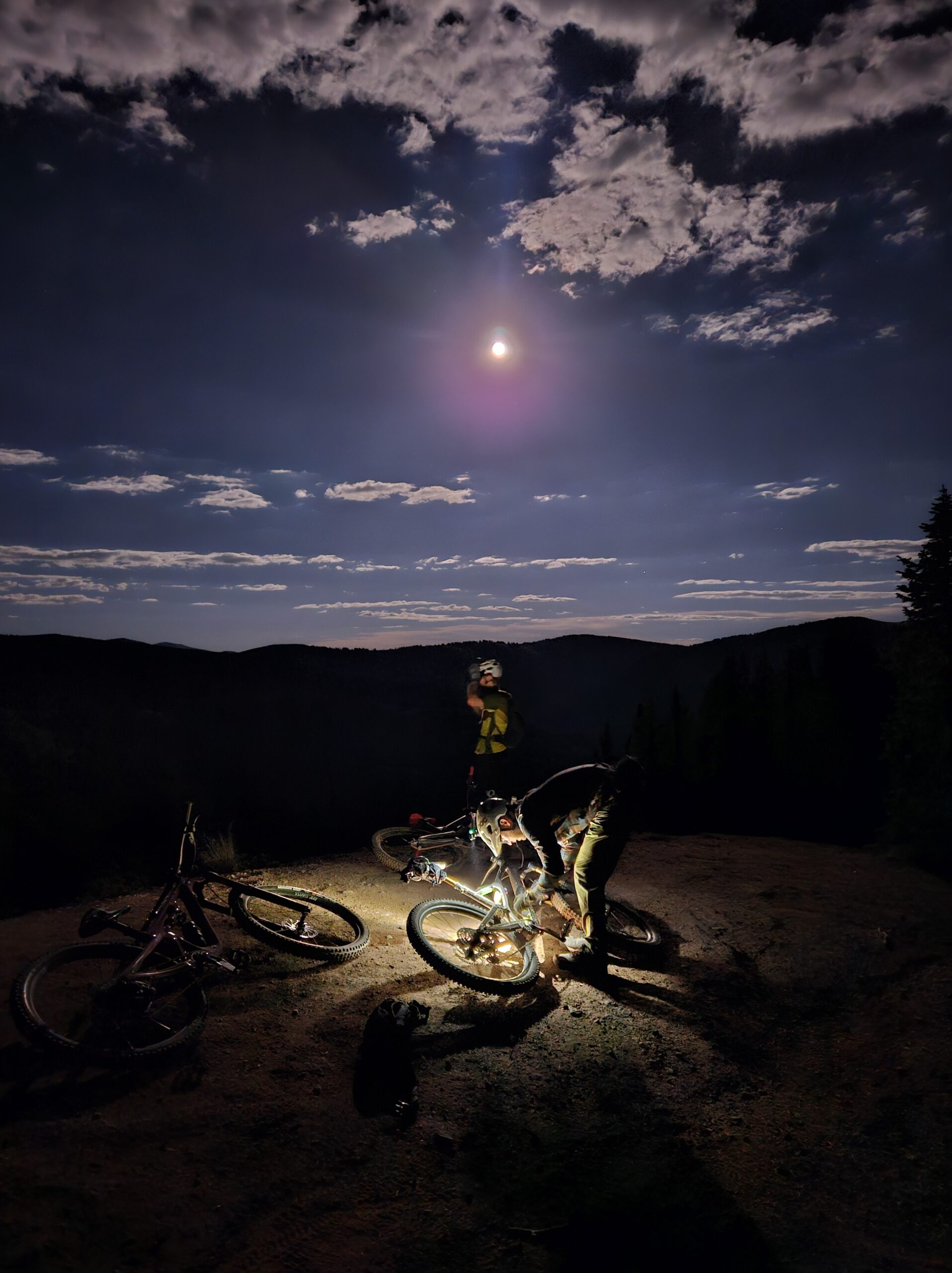
Who’s It For?
The biggest impression I have taken from the SB140 is that it’s a bike designed and built by people who ride Colorado-like singletrack — rolling, varied, often fairly rough and loose — and it works especially well for that purpose. The SB140 is a precise bike that prioritizes traction and trail feel, is most at home on fast, flowy, fun singletrack, and is a spot-on choice for those epic high country rides.
None of that is to say it can’t be ridden / enjoyed outside the state of Colorado or that you can’t have a blast on different types of trails. But within the generalist category, those scenarios are where the SB140 stands out.
The SB140 is going to be a fantastic fit for the rider who wanted their SB130 to have 10 mm more travel, rather than someone who wanted their SB150 to have 10 mm less.The new SB140 is emphatically an all-rounder Trail bike rather than a mini-Enduro one, and that clarity of purpose helps it excel at what it does.
Bottom Line
The Yeti SB140 is a very refined, very versatile Trail bike. Like the SB130 that preceded it, the SB140 has a preference for being ridden from a forward stance and isn’t the most easygoing bike if you’re not pushing it a little bit, but the SB140 doesn’t feel like a mini-Enduro bike or anything like that. Rather, it’s a true all-rounder Trail bike for more skilled and aggressive riders who want a bike that’s fun and engaging on a wide range of trails, rather than being focused on just the steepest and rowdiest ones.
Deep Dive Comparisons
BLISTER+ members and those who purchase our Digital Access Pass can check out our Deep Dive comparisons linked below. Get our Digital Access Pass to view all our Deep Dives and Flash Reviews, or become a BLISTER+ member today to get access to that and a LOT more, including the best worldwide Outdoor Injury Insurance, exclusive deals and discounts on skis, personalized gear recommendations from us, and much more.
Check out our Deep Dive comparisons of the Yeti SB140 to see how it compares to the Revel Rail 29, Ibis Ripley AF, Canyon Spectral 29, Santa Cruz Hightower, and Pivot Switchblade.

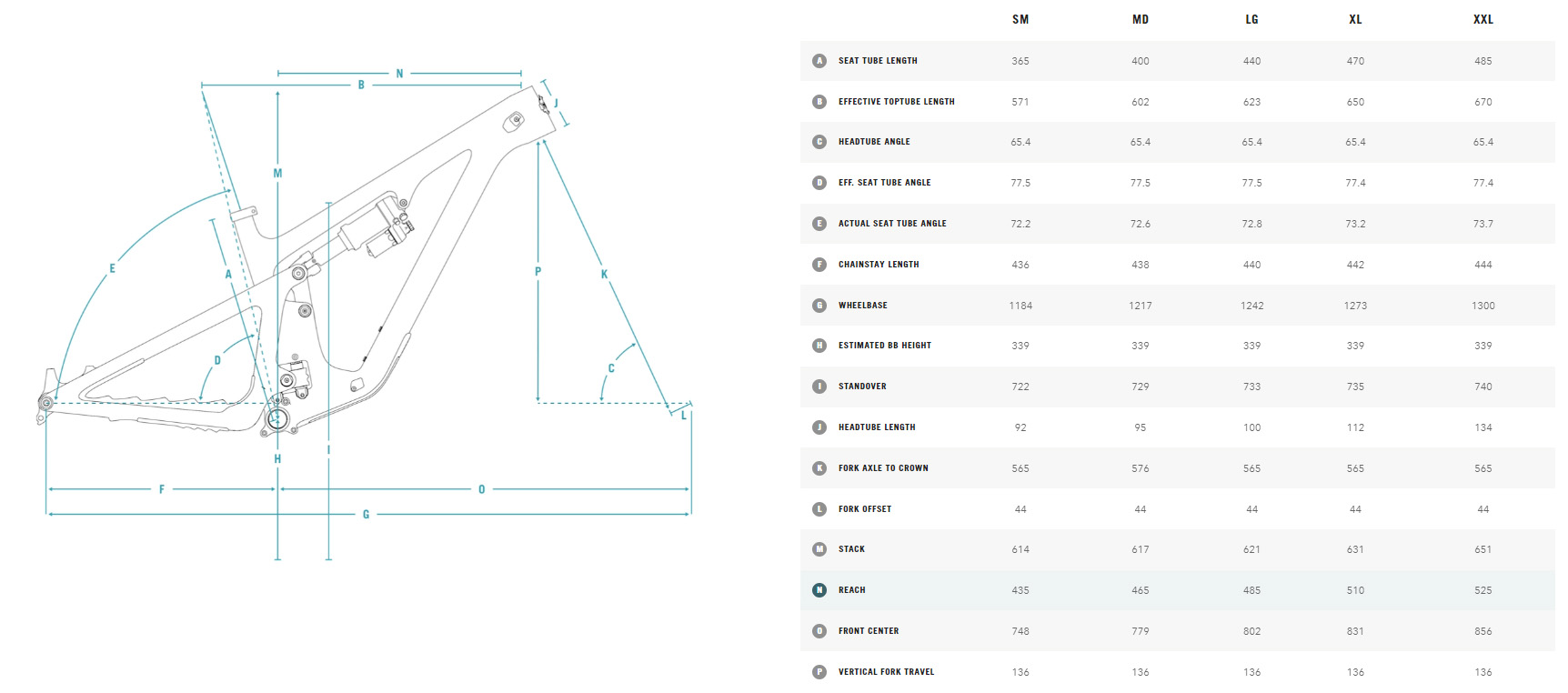
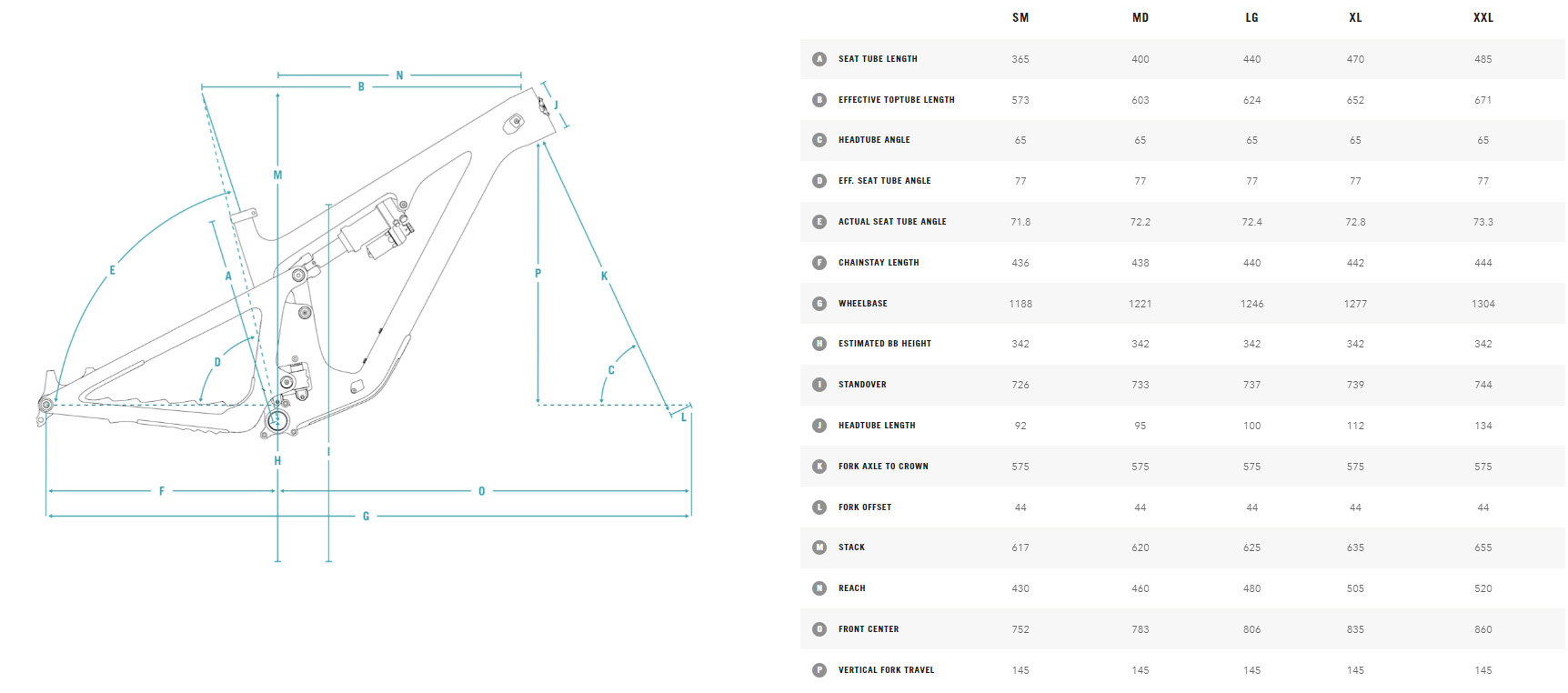
As an owner of the SB130 (there are MANY of us), I’m curious to hear whether the new SB140 is worth the upgrade or not. Based on what I’ve seen so far, this new bike is pretty similar to the SB130, with a few small tweaks to geometry and a some new bells and whistles. Looking forward to the full review!
Adam, I just switched out my 2020 SB130 T2 LR to the 140 same build…and there’s not a huge difference. Loved my SB130 but was starting to show some wear n tear. Part of that was I got $4k for used sale and they were doing 20% off new bikes ..so it was a bit of a no brainer upgrade.
I’ve been on about 5 rides on the Front Range with it and I’ll say the 10mm travel and switch Infinity tweaks help give just a little more gap where the bike starts to feel at it’s max coming down rocky/techy downhills. Body weight needs to be a bit more out front which if you aren’t comfortable/confident doing that than you might notice a negative there. Took me 2-3 rides to get used to it. Feels even more plush and soft than the 130 did on uphills. I might throw an Aggressor on my rear with Cushcore rather than the DHR. Never been a big fan of that tire.
But it’s almost the same bike and all the upgrades do exactly what you’d expect. Is it worth dropping $8-9k…not sure. I wish they could figure out how to shed 2-3 lbs on the bike.
I too have have a 2022 Yeti SB130 TLR T1 XT and have ridden it back to back against a SB140 at Copper Mountain (which there are demos of the bike at Norski Sports Copper Mountain). The differences between the two bikes are almost non-existent. You can tell a few things are different, but it barley effects the ride . I’d say the SB140 maybe climbs a bit more smoothly and has a slightly smoother character downhill that is maybe a bit more approachable. The SB130 is maybe a bit more demanding but a slightly lighter / quicker feel. As far as some people saying the SB140 has a more relaxed feel, maybe a little bit, but I really must emphasize that you really have to look to feel the differences. If you already have a SB130 there is really no reason at all to ‘upgrade’ to a SB140. The capabilities of the two bikes are basically the same too. Overall I love the way the SB130 LR rides, it is most capable trail bike all around that I have ever ridden.
I bet the big difference will be in the XL size. That starts to become a noticeable difference in chainstay length, which will affect handling.
Great review Eric. I personally find bikes that almost demand a conscious forward weighting to be very tiring on long days. I like a bike that feels ideal when I stand in a centered, relaxed position while descending…….but I’m older and possibly no longer relevant! :-)
Thanks Tom. Bikes with a more forward weight bias do sometimes take a bit more focus when descending, but great front wheel traction and feel!
Eric, I wanted to second Tom on an excellent review. As an SB130LR owner I’ve been looking forward to Blister’s take on the SB140. I also think you really nailed the qualities that the SB130/140 offers.